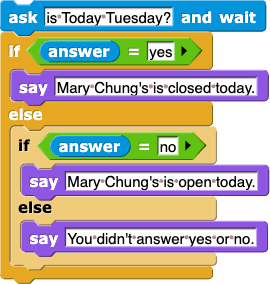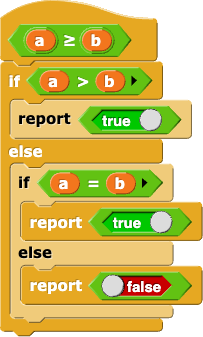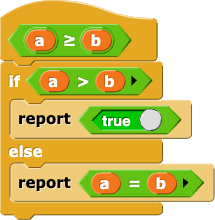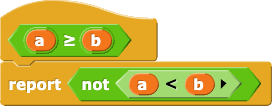Combining Conditionals
On this page, you will learn about nested conditional statements.
:
Nested Conditional
AAP-2.I.1
A nested conditional statement is an if or if else statement inside another if else statement.
Look back at the first two examples in the previous problem. Since the predicate expression a = b will report true when they are equal and false otherwise, it's unnecessary to use the nested conditional statement in the first example, and the second example using the predicate inside the else part is sufficient. Sometimes, however (especially when you aren't building a predicate), it can be helpful to use nested conditional statements.
-
AAP-2.I part b
 Describe what this code segment will do.
Describe what this code segment will do.

-
AAP-2.I part a
Look back at your code for writing on the stage in three colors. If it doesn't already use a nested conditional statement, copy the code, and create a new version that does.
 Here are four possible ways to define
Here are four possible ways to define 



